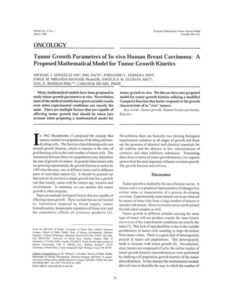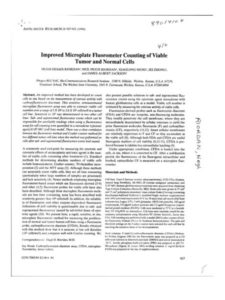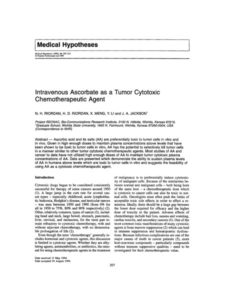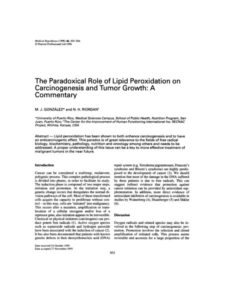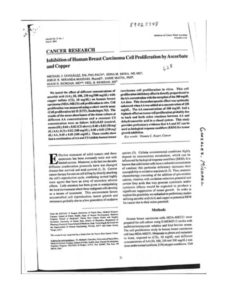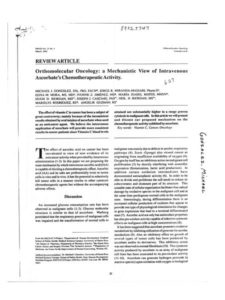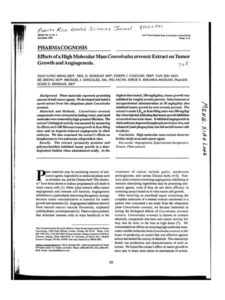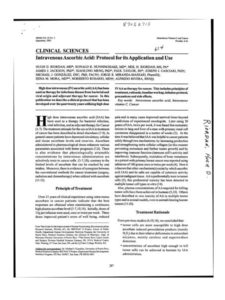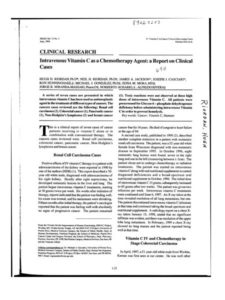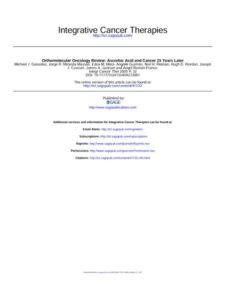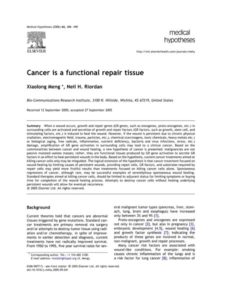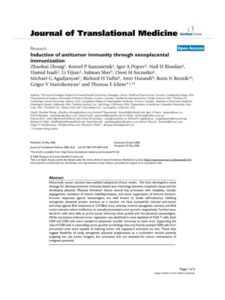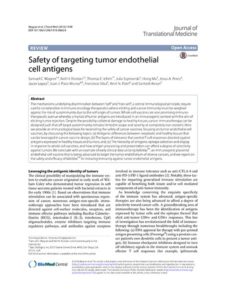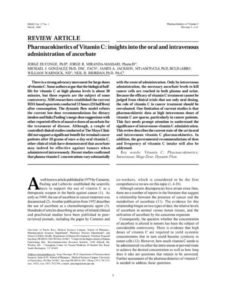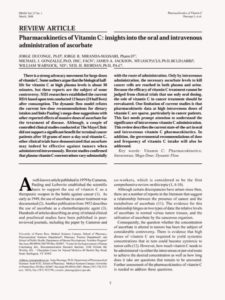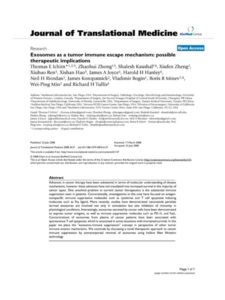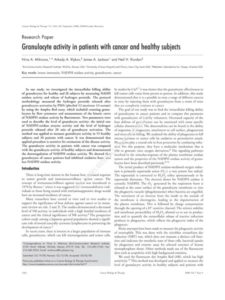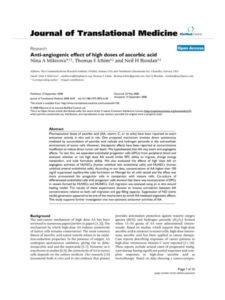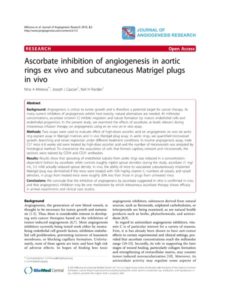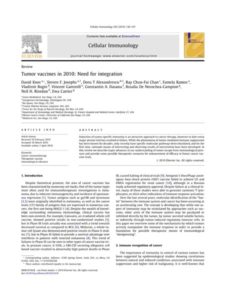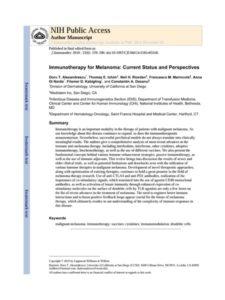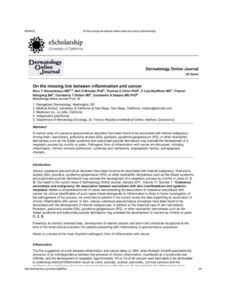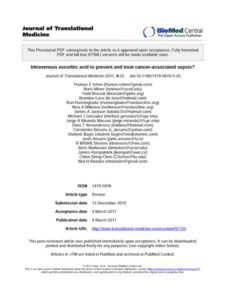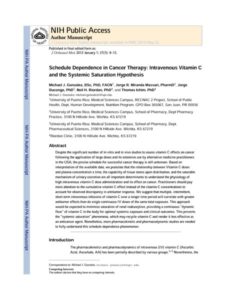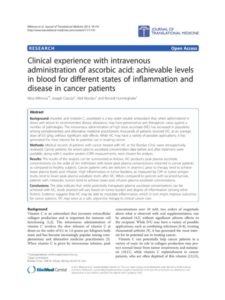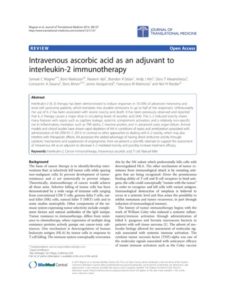L-ascorbic acid represses constitutive activation of NF-kappaB and COX-2 expression in human acute myeloid leukemia, HL-60.
J Cell Biochem. 2004 Oct 1;93(2):257-70.
Han SS, Kim K, Hahm ER, Lee SJ, Surh YJ, Park HK, Kim WS, Jung CW, Lee MH, Park K, Yang JH, Yoon SS, Riordan NH, Riordan HD, Kimler BF, Park CH, Lee JH, Park S.
Abstract
There is increasing evidence that l‐ascorbic acid (LAA) is selectively toxic to some types of cancer cells at pharmacological concentrations, functioning as a pro‐oxidant rather than as an anti‐oxidant. However, the molecular mechanisms by which LAA initiates cellular signaling leading to cell death are still unclear. In an effort to gain insight into these mechanisms, the effects of LAA on eukaryotic transcription nuclear factor NF‐κB and cyclooxygenase‐2 (COX‐2) expression were investigated. In the present study, LAA suppressed DNA binding activity of NF‐κB, composed of a p65/p50 heterodimer, through inhibition of degradation of inhibitory κB‐α (IκB‐α) and prevention of nuclear translocation of p65. The inhibitory effect of LAA on NF‐κB activity was dependent upon glutathione levels in HL‐60 cells, as well as generation of H2O2 but not superoxide anion. LAA also downregulated the expression of COX‐2, which has a NF‐κB binding site on its promoter, through repressing NF‐κB DNA binding activity. Moreover, cotreatment of 1 μM arsenic trioxide (As2O3) with various concentrations of LAA enhanced an LAA‐induced repression of NF‐κB activity and COX‐2 expression. In conclusion, our data suggest that LAA exerts its anti‐tumor activity through downregulation of NF‐κB activity and COX‐2 expression, and these inhibitory effects can be enhanced by co‐treatment with As2O3. © 2004 Wiley‐Liss, Inc.

